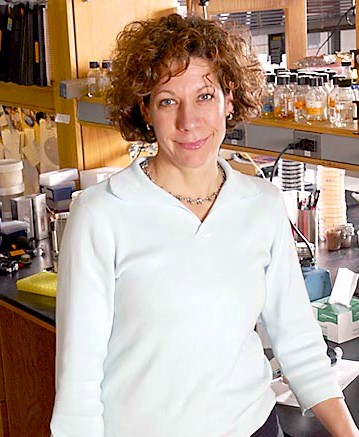Quorum – a quorum is the minimum number of members of a deliberative body, such as a legislature or bacterial colony, necessary to conduct the business of that “group”.
How Bacteria “Talk” An eight minute video explaining, in simple English, how bacteria communicate through Quorum Sensing (QS)

Bonnie Bassler is a Howard Hughes Medical Institute Investigator and professor in the Department of Molecular Biology at Princeton University
Bonnie Bassler responded to viewer questions and comments about “talking” bacteria.
Q: Is it possible that even when you make a drug to keep the bacteria from “talking” that the bacteria will work their way around the drug that’s stopping them from communicating, just like they’ve worked around current antibiotics?
Alexandra, 7th grade, Manchester, New Hampshire
A: Hi Alexandra,
Absolutely. We know that bacteria will evolve mechanisms of resistance to anti-quorum-sensing therapies. The hope is that because anti-quorum-sensing strategies do not kill bacteria, only keep them from communicating, this is a less harsh treatment and a less stringent selection for resistance. Because of that, the hope is that resistance will develop more slowly than it does to traditional antibiotics. Thus anti-quorum-sensing therapies may have a “longer shelf life” than traditional antibiotics. Of course, we won’t know if that is indeed the case until we make the drug and monitor its effectiveness.
Q: Do bacteria use quorum sensing for a variety of purposes, e.g., fish form schools for protection, lions form prides to hunt? Also, do the same types of bacteria from different colonies communicate differently than the same types of bacteria from different colonies, i.e., do genetically related bacteria recognize each other aside from their being the same species?
Paula, Washington, D.C.
A: Dear Paula,
Quorum sensing is used to control hundreds of different group processes. In the cases we understand best, the processes controlled are ineffective when carried out by individual bacteria acting alone but become effective when carried out in synchrony by the group. Virulence is a good example of a quorum-sensing-controlled behavior. A few bacteria can’t make us sick. Even if they release toxins or other harmful agents, we are HUGE compared to them, so each bacterium’s measly few molecules of a toxin can’t harm us. But, if the bacteria wait, count themselves with quorum-sensing molecules, and then all of the bacteria release their toxins simultaneously, they can overcome an enormous host. There are all kinds of examples of quorum-sensing-controlled group behaviors: bioluminescence, virulence, exchange of DNA, biofilm formation, symbiosis….
Bacteria have multiple chemical languages. We think each bacterial species has a molecule that is unique and represents its own species-specific language. Each unique molecule allows a particular species to know and communicate with its relatives (i.e., have a private conversation). We know there is a universal molecule, a sort of bacterial trade language that bacteria use to converse between species (i.e., a Bacterial Esperanto). There is mounting evidence that many additional molecules remain to be discovered, such as species non-specific molecules that say “who” the neighbor is. This field is only about 10 years old. So far we have only managed to identify a few molecules. We know that bacteria interpret a rich and complex chemical world, and we are working hard to define the complexity of the lexicon.
Q: Can you provide some thoughts on individuals with knee or hip implants and the biofilm some unfortunately develop and if there is hope for probiotics in this issue?
[first name not given] Raunaque, LaCrosse, Wisconsin
A: Dear Mr. or Ms. Raunaque,
Biofilms are communities of bacteria attached to surfaces (for example, as described in the NOVA piece, your teeth in the morning). Biofilms are a cause of constant concern for people with medical implants, heart valves, etc., because these medical devices provide a niche for bacteria to adhere to and thus cause infection. We know that quorum sensing is required for biofilm formation: If the bacteria can’t talk, they can’t make these large, interacting, adherent communities. The goal of many researchers’ studies is to find methods to interfere with biofilm formation, and, of course, a key focus of study is on interrupting quorum sensing. One strategy is to make molecules that antagonize the natural quorum-sensing molecules to impede biofilm formation. Another strategy is the one you suggest, to develop probiotic quorum-sensing therapies that enhance the conversation among our commensal bacteria at the expense of the biofilm formers. Both these avenues are currently being explored.